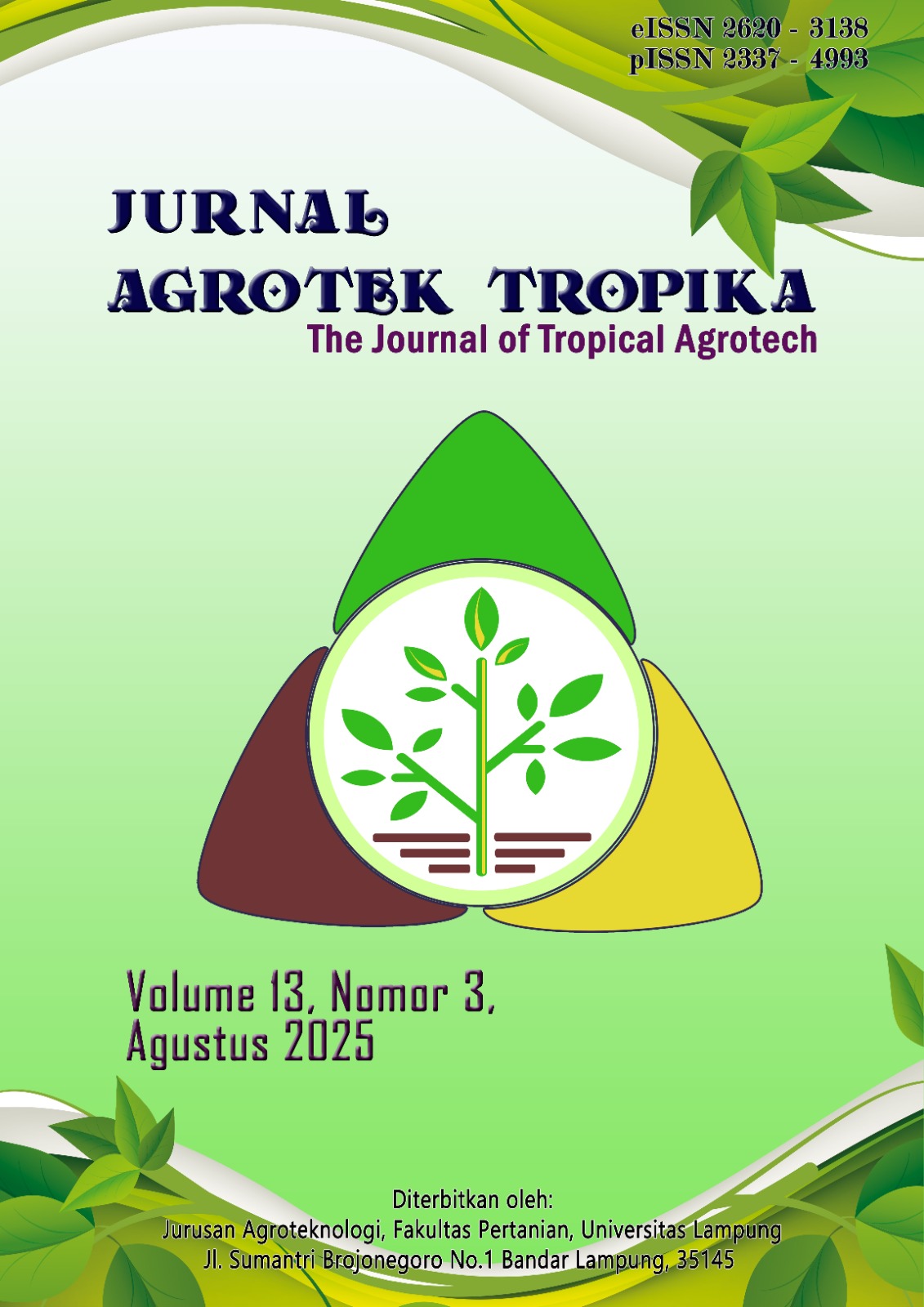Evaluating Soil Fertility and Quality Status for Balanced Fertilization-based Agricultural Land Management in Mendoyo Subdistrict
Keywords:
Balanced fertilization rate, Soil Fertility, Soil Quality, Paddy field, Plantation fieldAbstract
Soil fertility and quality have declined due to conventional farming practices that neglect fertilization. To restore soil fertility and quality, an evaluation is being conducted to determine balanced fertilization doses. This research aims to identify the soil fertility and quality status in the Mendoyo Subdistrict so as to provide recommendations for balanced fertilization in specific agricultural areas. The methods used were surveying and laboratory soil testing. The results demonstrated that the Mendoyo Subdistrict exhibited a combination of moderate and high soil fertility levels. The soils with moderate status were located in HLU (Homogeneous Land Units) I, II, V, VIII, IX, and X, while the those with high ones were located in HLU III, IV, VI, and VII. Moreover, the subdistrict exhibited varying levels of soil quality, ranging from poor to moderate, good, and very good. The poor-quality soil was located in HLU I, the good ones were located in HLU II, III, and IV, and the very good ones were located in HLU V, VI, VII, VIII, IX, X. The limiting factors in this research included texture, C-organic, nutrients (N, P, and K), and C-biomass. Meanwhile, the advanced regression and correlation tests indicated that C-organic was the most influential factor in determining soil fertility and quality, thus resulting in a recommended organic fertilizer dose of 2 t.ha-1 for rice, 15 kg.plant-1.th-1 for cocoa dan robusta coffe, and 10 t.ha-1 for coconut and banana. Inorganic fertilizer doses vary depending on the soil's nitrogen, phosphorus, and potassium content.Downloads
Published
How to Cite
Issue
Section
License
Copyright (c) 2025 Yayan Vandani, Ni Made Trigunasih, Made Sri Sumarniasih

This work is licensed under a Creative Commons Attribution 4.0 International License.
Jurnal Agrotek Tropika (JAT) is licensed under a Creative Commons Attribution 4.0 International License.
The copyright holder is the author. Authors publishing under any license allowed by the journal retain the copyright and full publishing rights without restrictions.
The Creative Commons Attribution 4.0 International (CC BY 4.0) license allows users to copy, distribute, and adapt the work, even for commercial purposes, as long as proper attribution is given to the original creator. This is a highly flexible license that encourages widespread dissemination and use of creative works, supporting innovation and collaboration across various fields.











